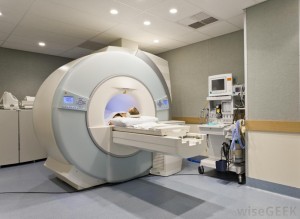Nuclear Imaging Equipment Market by Product (SPECT (Hybrid SPECT, Standalone SPECT), Hybrid PET, & Planar Scintigraphy), Application (Oncology, Cardiology & Neurology) & End user (Hospitals, Imaging Centers) – Global Forecasts to 2021
A number of key players are competing against each other in order to expand their existing customer base in the nuclear imaging equipment market. The top three players accounted for ~93% of the total nuclear imaging equipment market in 2015.

These key players include Siemens Healthineers (Germany), GE Healthcare (U.S.), and Philips Healthcare (Netherlands). Other players in this market include Toshiba Medical Systems Corporation (Japan), Neusoft Medical Systems Co., Ltd. (China), Mediso Medical Imaging Systems Ltd. (Hungary), Digirad Corporation (U.S.), CMR Naviscan Corporation (U.S.), SurgicEye GmbH (Germany), and DDD Diagnostics (Denmark).
Download FREE Brochure @ https://www.marketsandmarkets.com/pdfdownload.asp?id=98
Siemens Healthineers was the leading player in the nuclear imaging equipment market. The company offers a wide range of imaging equipment under various categories like PET/CT, PET/MR, SPECT/CT, and standalone SPECT. The company’s constant focus towards innovation has helped it dominate the market. The company has equally invested its efforts in the development of both SPECT and PET systems. Siemens is leading the entire medical imaging business in each of all the imaging categories. Siemens Healthcare has a powerful brand image, a strong product portfolio, and vast geographic presence. These factors have enabled the company to sustain its position among the prominent players in the market.
GE Healthcare holds the second position in the global nuclear imaging equipment market. A strong product portfolio, coupled with a widespread distribution network has enabled the company to maintain its leading position in the market. The company offers products under three different categories, namely, PET/CT, SPECT/CT, and standalone SPECT. GE Healthcare focuses on new product launches to strengthen its product offering in the market. This strategy is strongly backed by its R&D investments, which were USD 5,278 million in 2015, USD 5,273 million in 2014, and USD 5,461 million in 2013, respectively.
Philips Healthcare is another leading player in the nuclear imaging equipment market. The company has a diverse portfolio of PET and SPECT modalities. It has continually focused on forming partnerships and collaborations to better serve its customers. However, the company is currently facing regulatory issues from the U.S. FDA, which has led to a dip in its revenues from 2013 to 2015. The competitors of the company—GE Healthcare and Siemens Healthineers—are constantly focusing on introducing new products, an area in which Philips is currently lagging. Thus, to regain its share in the market, the company should focus on introducing new products and investing in R&D activities.
Key players operating in the nuclear imaging equipment market adopted the strategy of new product launches (21% of the total strategic developments in the market during 2013 to 2016).
To Know More @ https://www.marketsandmarkets.com/Market-Reports/nuclear-imaging-equipment-market-98.html